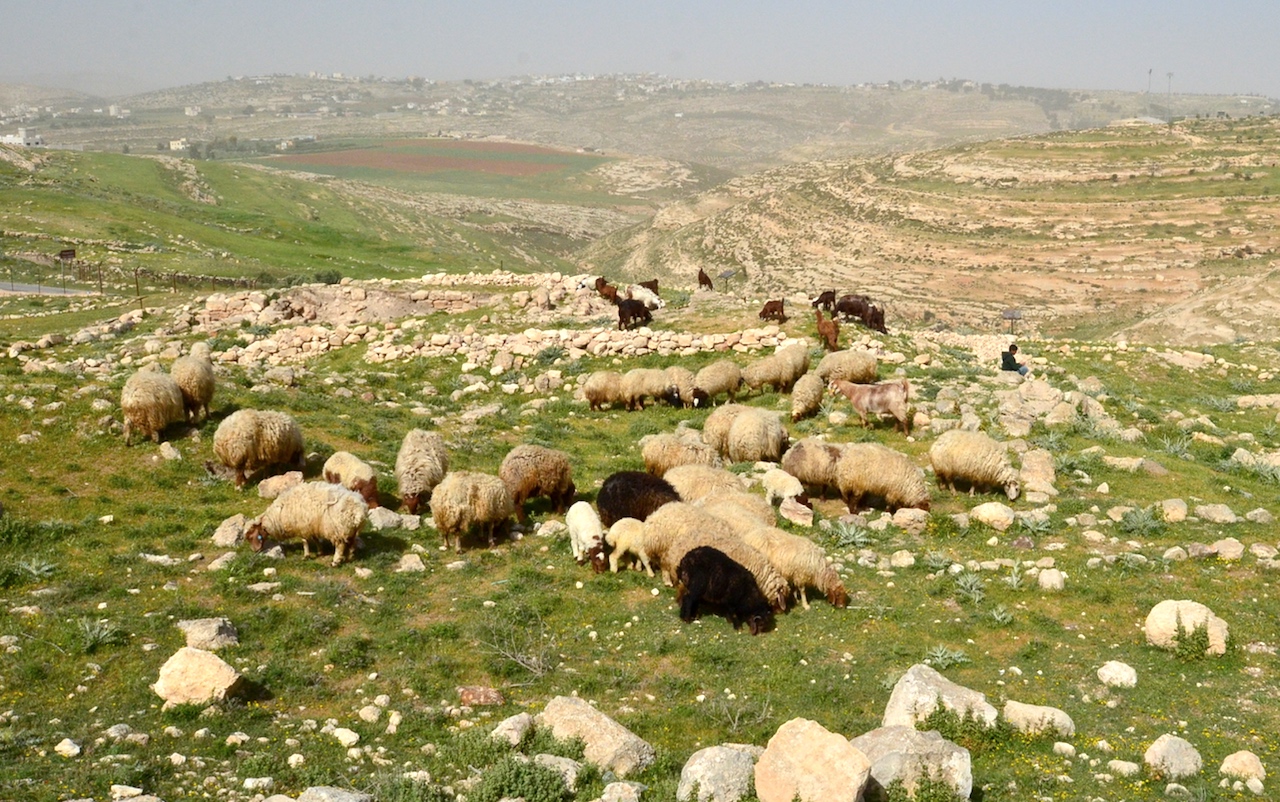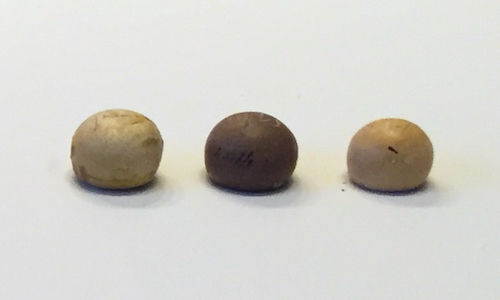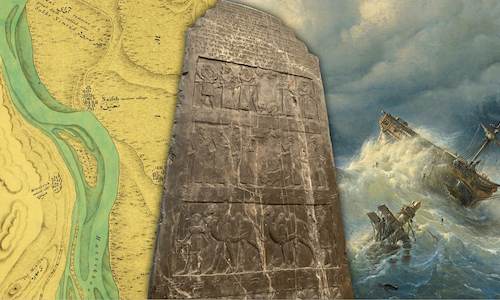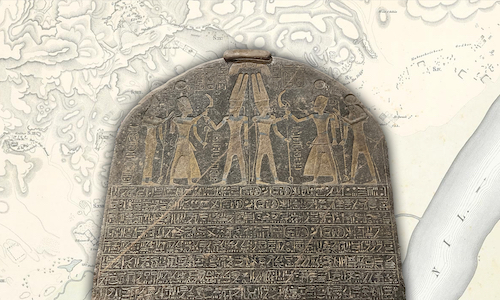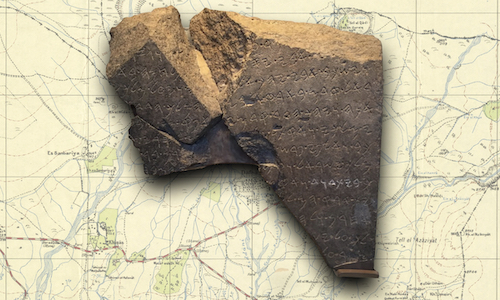Israelite Origins: Putting away childish things
We concluded the previous post by stating that almost everything of the Sunday School narrative on Israelite Origins is contradicted by the archaeological evidence. In this post we’re going to see why that is, taking a look at what the relevant scholarly experts, in their own words, have to say about just how well their discoveries match the main biblical narrative. We’re going to quote mainly from Amihai Mazar’s widely-used textbook, Archaeology of the Land of the Bible 10,000-586 B.C.E.1 though we’ll also dip into other resources as we go along.
We pick up the story toward the end of the wilderness wanderings…
Lead up to the Conquest
The Israelites were said to have stayed in Kadesh Barnea twice (Nu 13:26, 20:1), with one passage indicating that they stayed there for quite some period (Deut 1:46-2:1). What archaeological evidence is there that they were camped there? Here’s what Mazar in his textbook explains:
A thorough archaeological research at the oasis of Kadesh-Barnea did not reveal even one sherd from the Late Bronze Age or Iron Age I. The place was only populated during the third millennium B.C.E. and in the time of the Israelite Monarchy, when a royal fortress was established.2
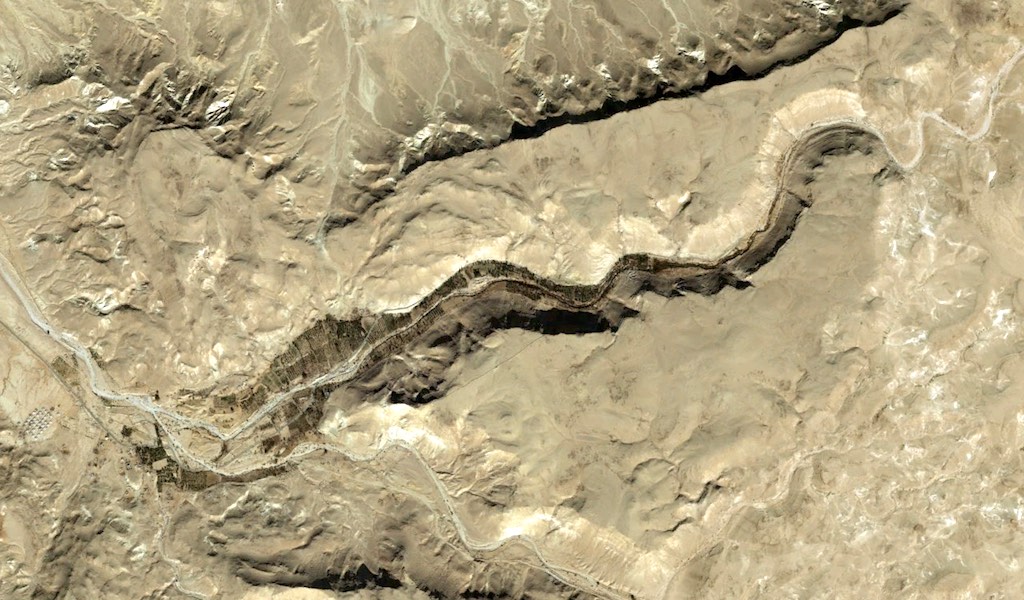
And if you think the problem lies in the fact that they were looking for evidence in the wrong period then you may be interested to read about the biblical dates of the Exodus. There you’ll find that using the biblical data alone it’s possible to come up with dates from 1596 BCE to 1406 BCE – a span of almost 200 years. We’ll deal with the difficulties around dating in a later post, but for now just understand that we’re expecting to find the earliest evidence of the Israelites in Canaan at the close of the Late Bronze Age and the beginning of Iron Age I, so, roughly speaking, around 1200 BCE. If things happened the same way a face-value reading of the biblical narratives occurred we should expect to find evidence of destruction of Canaanite cities at the end of the Late Bronze Age and of a new people with a different culture taking their place. Anyway, back to the archaeological evidence for the arrival of the Israelites in Canaan…
What about Arad? According to Numbers 21:1–3 the Canaanites of Arad took some Israelites captive. After rescuing them the Israelites annihilated the people of Arad, utterly destroying their city and surrounding cities. Can this event be archaeologically attested to? Sticking with the textbook we find this:
Extensive research in the Arad Valley, too, has revealed no evidence of any Canaanite settlement of the Late Bronze Age. At Arad proper there was an occupational gap after the destruction of the EB II city until the time of the United Monarchy, when a small Israelite settlement was founded there. Facing this problem, Y. Aharoni sought Canaanite Arad at other sites in the region, but all were uninhabited during the Late Bronze Age…3
Oh. So… no Arad either. There was an Arad however people had stopped living there more than a thousand years before the time of the conquest, and only started living there 200 years after the conquest. No one was in Arad, and neither were there surrounding towns at the time of the conquest.
Shortly before arriving in the plain of Moab the Israelites were supposed to have fought king Sihon of the Amorites whose capital was Heshbon (Nu 21:25–26). The Israelites fought them and won, settling in their towns including Heshbon. What can archaeology tell us about Heshbon during this period? Mazar tells us:
Heshbon (Tell Hesban) was settled for the first time in Iron Age I, but very sparsely according to the remains. There is no archaeological testimony of an “Amorite” state in this region which could have been conquered by the Israelites. Nor is there evidence of a Moabite kingdom in Iron Age I, in spite of the discovery in the region of several sites from this period.4
Dever’s summary is a little more comprehensive:
The site was excavated in 1968–1976 in a large interdisciplinary project sponsored by a group of Seventh Day Adventist scholars who perhaps intended to “prove” the biblical traditions of the Israelite conquest of the site. Much to their consternation, however, the town turned out to be founded only in the Iron II period—long after any supposed conquest. There were only a few scattered remains of the 12th–11th century B.C. (pottery, but no architecture), and no trace whatsoever of occupation in the 13th century B.C. The excavators resolutely published their results, however, and reluctantly conceded that something was drastically wrong with the biblical story about Heshbon.5
If we’re playing three-strikes-and-you’re-out then a face-value reading of the text has lost before we even got down to the plain of Moab! Let’s press on…
Arrival in Canaan
After crossing the Jordan the Israelites entered the promised land. What scripture tells us happened next (well, at least in the Masoretic) is one of the most memorable stories in the bible and a staple of Sunday School lessons and children’s bibles – the fall of Jericho. Surely an event of such magnitude left archaeological evidence that proves the record true? Well, the textbook leaves us pretty unsure:
At Jericho, no remains of Late Bronze fortifications were found; this was taken as evidence against the historical value of the narrative in the Book of Joshua. The finds at Jericho, however, show that there was a settlement there during the Late Bronze Age, though most of its remains were eroded or removed by human activity.6
And what about the current archaeological excavations at Jericho? Has more recent work turned up stronger evidence for the popular Sunday School story? Here’s what Lorenzo Nigro the director of the current excavations at Tel es-Sultan (i.e. Jericho) writes:
In the final stage of the Late Bronze the site was unoccupied, and only a few remains datable to the early Iron Age were identified.7
So, the archaeological evidence appears to be a little unclear, but at the precise time that the Israelites were marching around its mighty walls, Jericho, at best, was a small, unwalled settlement, and at worst and most likely, unoccupied. Neither interpretation of the archaeological evidence comes close to backing up the biblical account in Joshua 6. We’ll look into the problem of Jericho in a future post in this series.
How about Ai? Its story was a pretty cool Sunday School lesson – ambush, battle plans, deception, warfare, butchery, and fire. It turns out this one is pretty embarrassing… Mazar informs us:
A long gap in occupation followed the large Early Bronze Age city at ʿAi until a small village was established there during the Israelite settlement in the twelfth and eleventh centuries B.C.E. This lack of any Late Bronze Canaanite city at the site or in the vicinity contradicts the narrative in Joshua 8 and shows that it was not based on historical reality despite its topographical and tactical plausibility.8
Just to be clear, the time when Ai really was destroyed was around 1,000 years before Joshua was supposed to have taken the place and annihilated its people; by the time of Joshua there was no one living in Ai. It was empty.
Where next?
The Gibeonites visited the Israelite camp claiming to have come from a very long way away and tricked Joshua into making a treaty with them – the “Gibeonite ruse”. The text tells us that the Israelites soon discovered that far from living at a great distance from Canaan the Gibeonites were living just up the hill.

What does the archaeology of Gibeon tell us about it at the time of Joshua? Here’s the summary in the Anchor Yale Bible Dictionary:
…archaeologists have found no occupational remains at Gibeon in the LB Age in which the conquest stories are set; only a few burials from this period were uncovered. Archaeological remains at el-Jib show that Gibeon was reconstructed in the early Iron Age (1200–900 B.C.).9
Gibeon either didn’t exist or only barely existed in the time of Joshua? Well… that’s not great, is it. Especially as the record says that “Gibeon was a large city, like one of the royal cities, and was larger than Ai, and all its men were warriors” (Jos 10:2). That’s another one we’ll cover in a future post.
OK, that takes us as far as Joshua 10 and 11. We’ve covered those two chapters and their genre – the ancient conquest account – elsewhere. We saw that the use of the Ancient Conquest Account genre is strong evidence that the author didn’t have history in mind; rather their motives lay elsewhere. Those two chapters were never intended to be read as history. However, since that’s what most people do let’s do the same and show, this time from an archaeological perspective, why doing so is nonsensical. We’re not going to go through all the towns mentioned – there are loads of them – we’ll just pick a few.
The Conquest of Canaan
Our first example, Lachish, was assaulted, struck with the edge of the sword, and everyone in it killed. (Jos 10:31-32). What does the archaeological evidence have to say about this? Well, it was destroyed. But before you get too excited, it was destroyed at the wrong time. Dever writes,
Albright and others were once fond of citing the massive Late Bronze Age destruction at Lachish, after which it was abandoned for as long as two centuries. Albright dated the relevant destruction to ca. 1225 B.C. But large-scale excavations carried out by Israeli archaeologists in 1973–87 have proven that the destruction in question took place perhaps as late as 1170 B.C., as shown by an inscribed bronze bearing the cartouche of Ramses III (ca. 1198–1166 B.C.). That is some fifty years too late for our commander-in chief Joshua—unless he was leading troops into battle well into his eighties.10
Not great. Though the evidence is that Lachish did exist at the time of the conquest, it wasn’t conquered.
Next in the record after Lachish, and one of the last cities to be assaulted, taken, struck with the edge of the sword to the point that every person in it was utterly destroyed (Jos 10:36-37) was Hebron. What’s the archaeological evidence for this event?
Hebron was an important stronghold during MB II, but it was probably uninhabited during the whole of the Late Bronze Age until the settlement revival in Iron Age I.11
Oh great, we’re back to this. Nothing again. There was no Hebron during the time of the conquest. This is particularly difficult given that Hebron was taken at least 3 times (Jos 10:37, 11:21, 14:12–15).
We’ll deal with Hazor in a separate post so we’ll end the tour here.
Conclusion
So, the archaeological evidence is clear: the Israelites did not pass through Kadesh Barnea, they didn’t take Arad or its towns because they didn’t exist, same goes for Heshbon. Jericho was empty at the time its walls were meant to have been taken and the city burned. Ai had been empty for one thousand years at the time Joshua’s ambush was meant to have taken place. Gibeon didn’t exist and so didn’t need the Israelites to defend it, Lachish was around but has no evidence of being taken, and Hebron didn’t exist either. The story we learned in Sunday School explaining the origins of the Israelite people in the promised land didn’t happen. Sorry.
Dever sums it up best:
We must confront the fact that the external material evidence supports almost nothing of the biblical account of a large-scale, concerted Israelite military invasion of Canaan, either that of Numbers east of the Jordan, or of Joshua west of the Jordan. Of the more than forty sites that the biblical texts claim were conquered, no more than two or three of those that have been archaeologically investigated are even potential candidates for such an Israelite destruction in the entire period from ca. 1250–1150 B.C.12
But, we know from the evidence of the Merneptah Stele (which we’ll look at in more detail in a future post in this series) that there was a group of people in Canaan referred to by the Egyptians as “Israel”. There’s no doubt there were “Israelites” in Canaan in 1208 BCE.
So, if the biblical narratives aren’t supported by the archaeological evidence and instead are contradicted by it, where did these Israelites come from? What are the origins of this people if the biblical narratives aren’t historically accurate? And what is the purpose of the main biblical narrative we learned in Sunday School if the events it claims took place never happened?
In the next post we’ll see that scripture doesn’t speak with one voice on the origins of the Israelites. Though we may have learned about the conquest of Canaan in Sunday School, there are plenty of passages on our topic that we most likely didn’t cover. And they cast a different light on the matter. More next time.
Further reading
- Amihai Mazar, Archaeology of the Land of the Bible 10,000-586 B.C.E. (New Haven; London: Yale University Press, 1990), 328–334.
- William G. Dever, Who Were the Early Israelites and Where Did They Come From? (Grand Rapids, MI; Cambridge, U.K.: William B. Eerdmans Publishing Company, 2006)
- Robert D. Miller II, Chieftains of the Highland Clans: A History of Israel in the Twelfth and Eleventh Centuries B.C. (Grand Rapids, MI; Cambridge, U.K.: William B. Eerdmans Publishing Company, 2005), 104–111.
Featured image
The view north-west from Heshbon (Tell Hisban)
Footnotes
-
Amihai Mazar, Archaeology of the Land of the Bible 10,000-586 B.C.E. (New Haven; London: Yale University Press, 1990) ↩
-
Op. cit. Mazar, 329–330. ↩
-
Op. cit. Mazar, 330. ↩
-
Ibid. ↩
-
William G. Dever, Who Were the Early Israelites and Where Did They Come From? (Grand Rapids, MI; Cambridge, U.K.: William B. Eerdmans Publishing Company, 2006), 30–31. ↩
-
Op. cit. Mazar, 331. ↩
-
Lorenzo Nigro, “Jericho,” ed. Daniel M. Master, The Oxford Encyclopedia of the Bible and Archaeology- Volume 2 (Oxford University Press), 40-41. ↩
-
Op. cit. Mazar, 331. ↩
-
Patrick M. Arnold, “Gibeon (Place),” ed. David Noel Freedman, The Anchor Yale Bible Dictionary (New York: Doubleday, 1992), 1010. ↩
-
Op. cit. Dever, 49–50. ↩
-
Op. cit. Mazar, 332. ↩
-
Op. cit. Dever, 71. ↩
